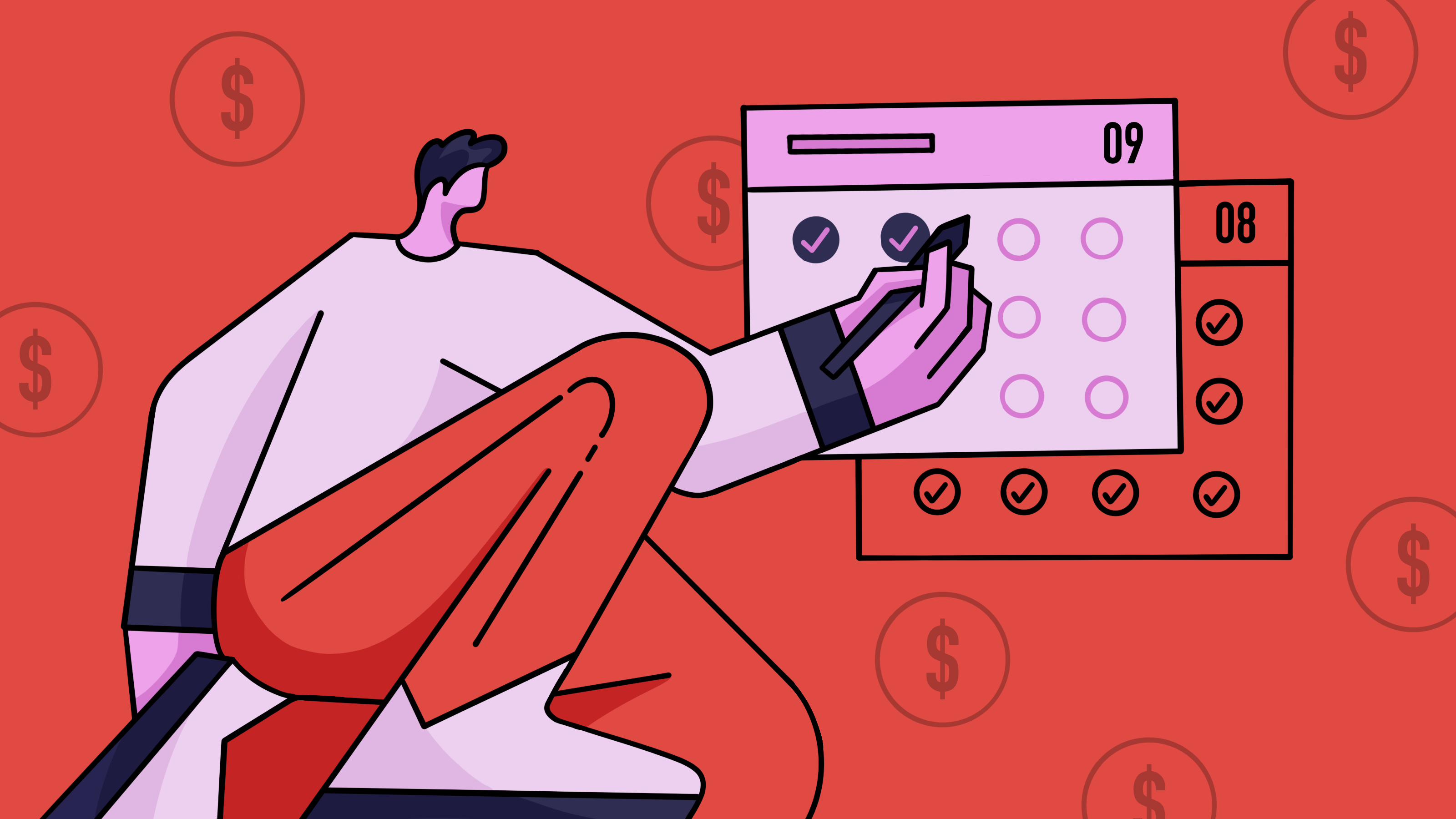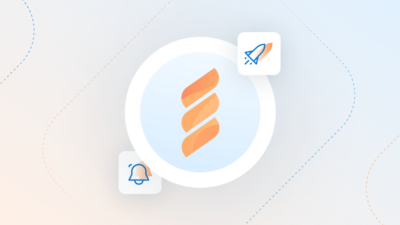Do you know what’s better than one sale? Multiple sales that happen automatically. That’s the beauty of subscription models.
Of course, that’s an oversimplification. While implementing a subscription model means ongoing revenue, it also brings up many challenges for managing those subscriptions. You have to create a subscription-friendly product, infrastructure, marketing plan, and customer retention plan.
But before we get into the nitty-gritty of subscription management, let’s see if the subscription model is a good option for you and your business.
Why Shift to a Subscription Revenue Model
If you have a product or service that can be offered as a subscription, right now is the perfect time to make the transition. Not only will recurring revenue provide stability during uncertain economic times, but it can help increase profits … fast. As you get more subscribers, revenue increases exponentially.
And as you gather and analyze more subscriber data, it becomes easier to create marketing campaigns to target the right audiences, improve sales, and increase revenue. You’ll also be able to improve predictable revenue streams and project their impact on your bottom line.
Advantages of a Subscription Model
1. Ease of Distribution
With digital product subscriptions, you don’t have to worry about shipping costs, buyer location, customs, or import laws. The post-checkout fulfillment process happens automatically. With FastSpring, customers get the latest version of your products in the form of files and software keys delivered to their inbox after they’ve completed their purchase.
2. Reliable and Consistent Revenue Stream
This is the most obvious benefit of subscription models—you’re able to reliably predict the revenue your company will receive. With active subscribers, recurring payments are sent automatically, giving you predictable cash flow and a steady income stream.
3. Stronger Customer Relationships
The subscription model naturally shifts your focus from customer acquisition to customer retention. You’re able to grow and nurture relationships with customers and cater your business to the ongoing needs of your subscribers.
4. Easier to Scale
Since all fulfillment is automated with digital downloads and you don’t need to have physical inventory, it’s much simpler to grow your business. All you need are the right tools and a subscription management system to handle the additional traffic.
Popular SAAS Revenue Models
Digital products are the simplest and most cost-effective products to shift to a subscription model, so we wanted to spend some time talking about SAAS-specific models to help you determine the best option for you.
1. Flat-rate Pricing
In this scenario, you offer users a single price per month or year. This fee gives the customer access to all features and the same level of access.
2. Usage-based Pricing
This is when you charge customers based on their use of your software or service. This model often has a base monthly fee with additional charges based on the customer’s usage. Use-based pricing gives the customer more flexibility.
3. Tiered Pricing
This strategy offers software and services at multiple price points. Each price point comes with a unique set of features and functionality. The lowest tiers include the least number of features and functionality, and the highest tiers are the most robust packages.
4. Per User Pricing
Pricing depends on the number of users. The more users who use the software or service, the higher the subscription fee.
5. Freemium Pricing
This is a two-tiered pricing model that divides users into free and premium tiers. Free-tier users have limited access to features and functionality. Premium users gain greater access to features and functionality in return for their paid accounts.
How to Shift to a Subscription Software Model
Transitioning to a subscription model can be overwhelming. But remember, you don’t have to make the shift all at once. You can test the concept with one or two products. Or continue to offer one-time purchases in addition to subscription options. The transition into offering subscription software can be as quick or as slow as you need it to be.
And as you start offering subscription products, be sure to pay attention to the customer data. This information will help you make adjustments to your subscriptions and campaigns to help increase retention and boost growth.
Once you’re ready to make the shift, follow the steps below to ensure the smoothest transition possible:
1. Get Your customers’ perspective.
Before you do anything, you should know what your customers think. Send out customer surveys and conduct customer interviews to see if they would be interested in a subscription. Also, ask questions about the different types of revenue models to determine which options your customers prefer.
2. Include a cross-functional team in strategy development.
Shifting to a subscription model will involve every team from sales and marketing to customer service and accounting. So, put together a cross-functional team with representatives from each department to help develop a roll-out strategy and a subscription management plan.
3. Rethink your product structure, pricing, and delivery.
Pricing software is tricky, and pricing subscription software is even more problematic. Be sure to give your customers options and be straightforward about all fees. And get an ecommerce partner, like FastSpring, to ensure recurring payments and product delivery go off without a hitch.
4. Define your new customer lifecycle.
The customer lifecycle in a subscription model doesn’t end with a post-purchase follow-up email. In fact, it never ends. As soon as a customer completes a purchase, it’s all about renewal and retention. So, it’s crucial to create a new game plan for the subscription customer lifecycle.
5. Adapt your sales channels and selling strategy.
As mentioned above, your end goal is not to get one customer to complete one purchase. Your goal is to get one customer to commit to completing multiple purchases. As such, your sales channels and selling strategy is going to look very different. Work with your marketing and sales team to develop a communication strategy that reaches customers along the entire customer lifecycle.
6. Plan a soft-launch to existing customers.
Give your current customers exclusive access to your new product offerings. You may even offer them a special discount for early adoption and brand loyalty. This is also a great way to improve customer retention.
7. Migrate existing revenue streams.
Once you’ve proven the concept, develop ways to move your existing revenue streams to the subscription model.
Common Mistakes to Avoid
As with any new business venture, there are going to be some challenges and pitfalls. But we’d like to help you avoid those as much as possible. Here are some of the most common subscription mistakes and how to avoid them:
Overlooking the Value of Self-Service Options
People like to be in control over their purchase process. So, give customers options when it comes to the terms of their purchase. Allow them to choose how often their subscription renews (weekly, monthly, yearly, etc.), what features they want to include, and how long they want their subscription to last. Self-service options empower your customers and save you time in the long run.
Hard-Coding Your Own Billing Solution
It always sounds like a good idea to have a custom billing solution that fits your business perfectly. But it’s also super expensive and time-consuming. Get an ecommerce partner (hint: FastSpring) to handle your subscription management. This allows you to focus on developing new products instead of trying to optimize the checkout process, recurring payments, and fulfillment on your own.
Assuming All Countries Manage Recurring Payments the Same Way
While selling digital products internationally is much easier than selling physical products, there are many things to consider when crossing borders. Be sure to do your research to guarantee you’re compliant with all local and international rules and regulations and that your subscription management software is equipped to handle local specifications.
Underestimating Customer Support Needs
With instant delivery and self-service options, you may think your customer support team will be bored. Wrong. Not only do customer service reps need to understand your products and services, but they also need to know how each subscription functions so they can help customers when issues arise.
Offering Freemium Without a Conversion Strategy
The freemium model is a great way to acquire new customers. However, you need to have a strategy in place to convert your free customers to paying customers. This conversion strategy needs to include product development, marketing, and sales teams.
Forgetting Tax Compliance
Tax law and compliance are complicated. And it gets even more complicated with global commerce. Be sure to stay up-to-date with the latest local and national tax regulations. Or, you can avoid the stress and hire a partner like FastSpring to ensure your business remains compliant with all tax laws.
How FastSpring Can Help You Make the Shift
Transitioning to a subscription business model is not for the faint of heart. But the process can be made infinitely easier and smoother with a partner like FastSpring. Our full-service ecommerce solution offers businesses:
- Global Payment Support for Recurring Payments
- Automated Notifications and Reminders for Subscription Billing
- Dunning Management
- Branded Checkouts
- Flexible and Scalable Options
Ready to start offering subscription software and services? Sign up for a free trial today.
![[Customer Story] Why TestDome Considers FastSpring a Real Partner](https://fastspring.com/wp-content/themes/fastspring-bamboo/images/promotional/2023/FastSpring-TestDome-blog-thumbnail.jpg)








